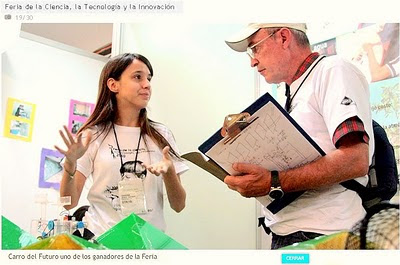Benoît Mandelbrot, one of the most original and influential mathematicians of the 20th century, has died of pancreatic cancer at the age of 85. He was the father of fractal geometry – finding underlying patterns in roughness and irregularity – and was a key figure in the broader field of chaos theory.
Mandelbrot had enormously wide interests. Over a 60-year career, working first in France and then the US, he applied his findings to physics, biology and economics, publishing devastating critiques of modern mathematical finance.
His most famous creation is the “Mandelbrot set”, a mathematical creation of infinite complexity. The patterns created have brought mathematics into popular culture and fractals have become a standard feature of school curriculums.
His family said Mandelbrot saw himself as a scientific “maverick”, “moving across many disciplines at once to find new insights, and seeking always a measure of order in physical, mathematical or social phenomena that are characterised by abundant data but wild variability”.
Benoît Mandelbrot was born in Warsaw on November 20 1924 but moved as a child with his Jewish family to France, where he survived the second world war and began his mathematical career with the Centre National de la Recherche Scientifique in Paris.
Nicolas Sarkozy, the French president, said Mandelbrot’s was “a powerful, original mind that never shied away from innovation and battering preconceived ideas”.
“France is proud to have received Benoît Mandelbrot and to have allowed him to benefit from the best education,” said Mr Sarkozy.
In 1958 Mandelbrot emigrated to the US, where he spent most of his professional life working for IBM at its main research centre at Yorktown Heights, New York. Although his work there was valuable for IBM, for example on the suppression of electronic “noise” in computing and telecommunications, the company also gave him considerable time and freedom to develop his interests and take part-time academic fellowships.
Towards the end of his career, after leaving IBM, Mandelbrot taught mathematics at Yale University. He finally accepted a tenured academic job in 1999 at Yale as Sterling Professor of Mathematical Sciences: at the age of 75, he was one of the oldest people ever to begin his first full-time professorship.
Mandelbrot published several books, of which the most celebrated was The Fractal Geometry of Nature in 1982. While he had studied markets throughout his career, starting with a 1962 paper on cotton prices, financial mathematics became a pressing interest during the last decade of his life. In 2004 he published with Richard Hudson The (Mis)Behaviour of Markets: A Fractal View of Risk, Ruin and Reward – a devastating attack on the failure of mainstream economists and mathematicians to understand the likelihood of wild swings in prices and the risk of financial disaster.
Mandelbrot felt vindicated by subsequent events, such as the near collapse of the global banking system in 2008.
Mr Hudson, publisher of the Science Business media group, described his co-author as “the ultimate interdisciplinary scientist. The scientific world is built in silos, and he made a career out of going into other people’s silos uninvited and coming up with insights they did not have. In economics he was an outsider – and often not a welcome one”.
Mandelbrot is survived by his wife Aliette, sons Laurent and Didier, both medical doctors, and three grandchildren.





